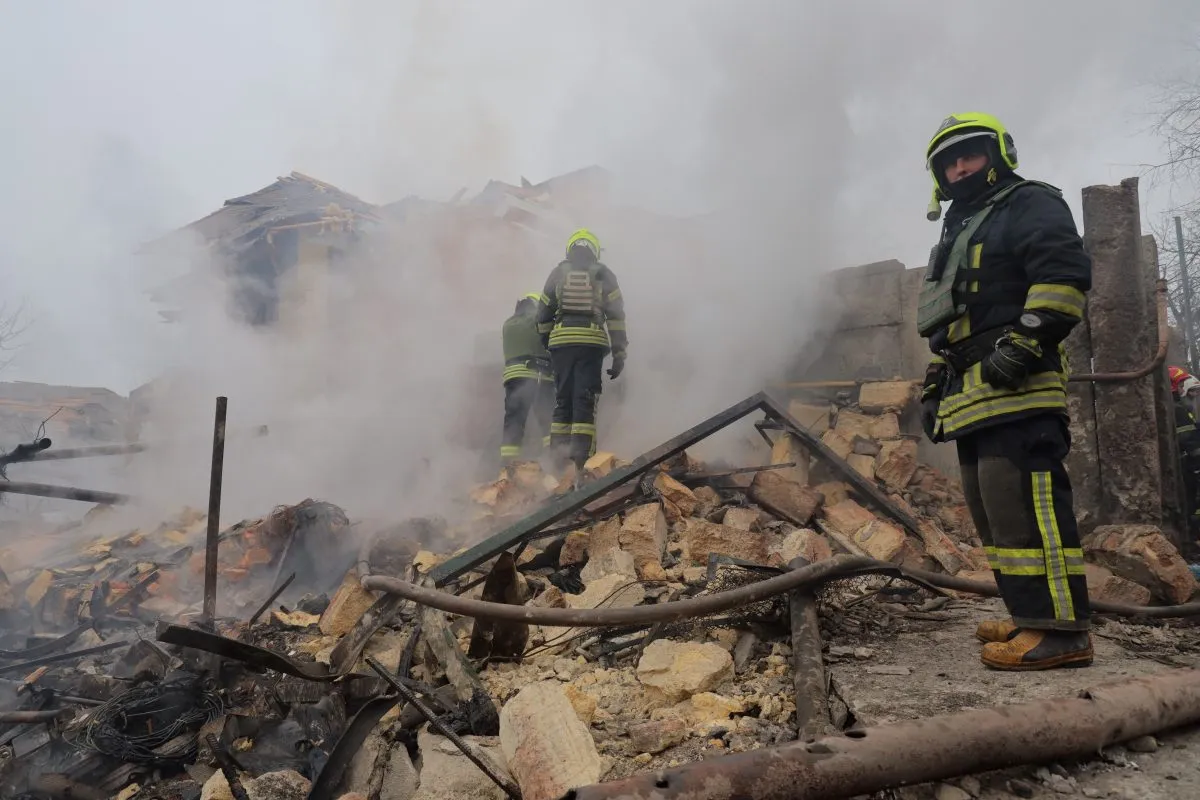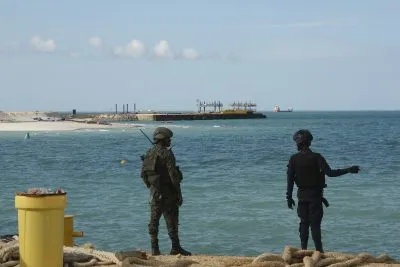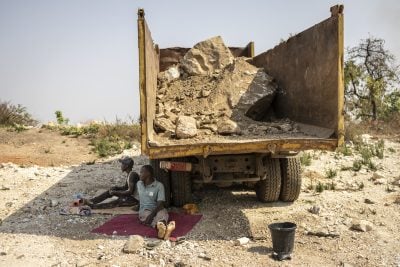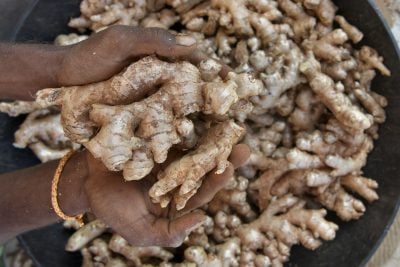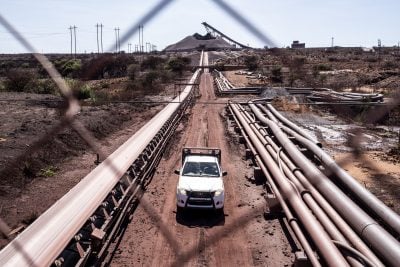It is a sight that should spell hope in a war. A fleet of new barges float in a new mechanised loading dock at Voznesenski. It is built on the river that runs through one of Ukraine’s biggest grain export cities, Mykolaiv, two hours’ drive north-east of Odesa.
Instead these idle barges at Nibulon are the epitome of the loss and waste of more than two years of war that is draining the economy of Ukraine. The dock and the barges were a smart investment before the war. Nibulon ploughed more than $700m into the dock and another $60m into the barges, built in Mykolaiv. The idea was to float grain down the river to the Black Sea. The only problem is that river route now runs through a battlefield.
“We can’t take any cargo down that river; they will shoot at us,” says Mykhailo Rizak, a trained lawyer and deputy CEO of Nibulon’s government and legal affairs office. “Even if the war ended tomorrow, we could probably only move about a million tonnes from this dock. It would take us 10 years to get the river route up and running to full capacity.”
Nibulon’s balance sheet tells the story. Since war broke out, back in February 2022, the company has lost $416m and the firm is running at a mere 32% of capacity. Nibulon used to handle 30% of Ukraine’s cereal, but now many of its grain silos stand empty like towering metal cathedrals. The company was also the largest supplier to the World Food Programme and has supplied 17m tonnes of wheat to Africa since 2009. It now sends 75% of its grain by rail and the remainder in 100 trucks. At least 662 of its 4,000 workers are in the army and 20 have been killed. More than 25,000 hectares of company land have been mined; Ukraine is now one of the most heavily mined countries in the world. It is going to cost the company millions to pay mine lifters to remove them.
The fighting also robbed Nibulon of its guiding spirit. Founder Oleksiy Opanasovych, who led the grain exporter since 1991, chose to stay in Mykolaiv with his workers when the Russian invasion began. On the night of July 31, 2022, according to the company, a Russian missile hit Opanasovych’s home in downtown Mykolaiv, killing him and his wife Raisa Mykhailivna. The company says it is going to invest through the hard times.
At the other end of the grain production chain millions of farmers across Ukraine are trying to work their way through a war. By far Ukraine’s greatest farming asset is its highly fertile black soil. In the farming districts in the south of the country, black soil fields disappear over the horizon. The soil is so rich that, during World War Two, Ukraine’s Nazi occupiers used to steal trainloads of soil to boost the grain fields of the “fatherland”. Historians, in Kyiv say that, in an act of agricultural and economic retaliation, its soldiers raided the botanic gardens, when they took Dresden in 1945, and appropriated azaleas that are grown commercially in Ukraine to this day.
Grain farming is not finding it so easy to bloom in the wake of the Russian invasion. The remote village of Myrne, in the southern Odesa region, is typical of many bearing the brunt of the economic hardships caused by the fighting. Here, Russian rockets hit arable land, wounding one farm worker and destroying crops. Labour is also scarce. Many workers from Myrne have joined up to fight – around 185 out of a population of 2657 – and a number have been killed, according to the mayor Volodimir Osadchii. He said Russian missiles had damaged 38 houses in Myrne and that the high number of refugees moving through the town had created shortages of food. Volodimir Fkhbitskii has been farming in Myrne for more than 30 years and his weather-beaten face tells how hard it has been.
“Of all the years, the last two have been the hardest,” he says. Fkhbitskii battles to make a living growing vegetables, grain, wheat, barley and sunflowers for oil on 200 hectares. He says that he struggles to pay his input costs in hard currency and earns revenue in local currency.
The latter has dropped like a stone in recent months, making his inputs even more expensive. Like many nations, Ukraine – the breadbasket of Europe – is also encouraging its farmers to invest in green inputs. Fkhbitskii complains these are too expensive, lead to smaller yields and allow parasites to destroy his crops. He says the green effort should be shelved in Ukraine until the war is over. Is it worth farming in Ukraine?
“I have been asking myself that question every day for the last 30 years, but I have yet to find the answer,” says Fkhbitskii, through an interpreter.
Through it all, the grain export terminal is keeping the grain moving and with it Ukraine’s hopes of earning hard currency to fight the war. The Black Sea Grain Initiative provided breathing space as Russia allowed exports through its blockade. This came to an end in July, after Ukraine had exported 32.7m tonnes of grain. Egypt received 1.5m tonnes; Tunisia 714,000 tonnes, Libya 560,000 tonnes. They were followed, in descending order, by Kenya, Ethiopia, Algeria, Morocco, Sudan, Somalia and Djibouti.
Since then, Ukraine has found a safer way of exporting grain through the missiles and mines. The country turned first to its dormant ports, at the mouth of the Danube, Izmail and Reni. It built 20 new terminals to ease shipments and more than a thousand ships have passed through in the seven months since the change.
Then there is the sea route. Grain ships hug the coast, just 12 kilometres from shore, heading south past Romania, Bulgaria, and Turkey on their way to the Bosphorus and the open sea. The new route has its drawbacks: insurance costs are high and hugging the shore means that only smaller vessels, with a shallow draft, can make the trip. To make matters worse, every morning Russian forces send out Moscow-made Sukhoi SU-24 fighter bombers to drop sea mines along the grain route. It is the Ukraine Navy’s job to find and detonate them before a grain ship falls foul. Despite the danger, this route has been so successful, according to the port authorities, that Ukraine has managed to move 28.5m tonnes of grain between last August and the beginning of March 2024.
These struggles are mirrored in the streets of the port of Odesa. Many businesses are struggling to keep their doors open as more and more workers flee the fighting. Before the war Ukraine had 40m people – recent estimates put that figure as low as 28m. The government hasn’t yet brought in conscription, to make up for 31,000 casualties, but many young people fear it will. The government is worried enough about the flight of its fighting men to impose a five-kilometre exclusion zone at Ukraine’s border for any male of military age.
“There are still young men swimming rivers to get out,” says a source on the ground.
Want to continue reading? Subscribe today.
You've read all your free articles for this month! Subscribe now to enjoy full access to our content.
Digital Monthly
£8.00 / month
Receive full unlimited access to our articles, opinions, podcasts and more.
Digital Yearly
£70.00 / year
Our best value offer - save £26 and gain access to all of our digital content for an entire year!
 Sign in with Google
Sign in with Google 